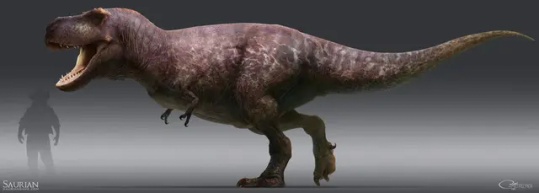Don't wanna be here? Send us removal request.
Text
You know, the "nice part" of Sekhmet actually has a name.
Annette was channeling Hathor.
21 notes
·
View notes
Text
Imagine being a human in the middle Paleolithic. You don't even know what Indonesia is, much less that part of it just exploded. All you know is that the sun's going out. Every year there are fewer edible roots in the ground, less fish in the streams, and the deer get thinner and more skittish--just like you. You don't know how to farm grain or domesticate animals; every day is a desperate search for enough calories to survive. You might think your little community is the last group of people left in the world, and you're not far from wrong. Humanity is an endangered species, hovering so close to the brink of extinction that people in the future will be able to see the struggle written in your genome.
But you don't stop struggling. You endure. You hunt, you gather, you dig in the dirt and fight other humans and fuck other humans and teach your children to do the same. You do anything necessary to stay alive and protect everyone around you--and you find any little moments of joy you can. You hold your partner. You play with your kids. You try to create interesting rhythms when you're knapping flint, and soon the rest of your family starts joining in. Maybe you wonder if someday, the world will be a better place--but you know that it only matters if you or your children or your children's children live to see it.
So you keep going. Even when it's hard, you keep going. Even when it hurts, you keep going. Even when you're cold and hungry and tired--which is all the time--you keep going. Even when you're not sure you'll ever see a clear sky again, you keep going. And when you finally die, your kids keep going. They stay alive, and they find happiness, and they teach their children the lessons they learned from you.
And then, one day, decades after you've died, it starts to get warmer. The wolf your great-grandson has been throwing scraps to finally comes close enough to lick his hand. That green rock your great-great-great niece used to build the fire pit has turned into a shiny sort of leaf that's harder and sharper than flint. It's still tough, and sometimes your descendants are still hungry, but they're getting stronger, and they have more time to think and play--and now they're not just breaking rocks to make handaxes and arrowheads, but to make images of things they've seen. And they don't know it, but that's making them smarter, and more creative--they're starting to talk about concepts you physically couldn't have understood. They're living longer, healthier, happier lives, and imagining even bigger and better things--and someday, their descendants will have the power to make them.
And none of it would have been possible if you hadn't kept going.
It gets better. Don't give up. Don't let go. Rage against the dying of the light--because someday, there will be another sunrise.
6 notes
·
View notes
Text
explain your gender in 10 words or less without using boring words like “male”, “female”, “nonbinary”, “masculine”, “feminine” or “androgynous”.
go!
306K notes
·
View notes
Text
You know, I know I mentioned it in my last Castlevania post, but this deserves its own:
Holy shit, imagine Ending 2 of Dawn of Sorrow from Netflix!Alucard's perspective.
His reincarnated father is Doing The Thing(TM) again, and fate's dropped him in with yet another Belnades and Belmont so he can lead them around his ancestral castle again and help them kill his broken, grief-crazed dad again. He's reliving some of the worst moments of his entire life, and he doesn't even have the simmering Trephacard sexual tension to take the edge off. It'd be a little lame if Dawn of Sorrow hadn't come out before Netflix, because then it'd just be a rehash of that plot--but I played DS in high school twenty years ago, so now when I play the Switch version I can appreciate the extra dimension it adds.
15 notes
·
View notes
Text
Kind of choked up about Alucard's last lines in Nocturne, because my god, is he in for a rough time.
"Something new and precious, and maybe world-changing."
Oh, you precious baby.
This new thing they've discovered is liberal nationalism.




He's gonna have a front row seat to the next three hundred years of insane bullshit. Watch "we're all one nation, and we deserve to be free and equal" turn into "we're all one nation, and you're not, so you're trash to be burned." Watch Robespierre and Dessalines and Thiers and Bismarck twist the moral arc of history down into the mud and ashes of Targoviste.
And one day in 2036, he's watching Soma throw an apocalypse tantrum because Those Bastard Humans Killed Her, and he finally realizes that nothing ever really changes.
#castlevania#castlevania netflix#castlevania nocturne#castlevania alucard#adrian fahrenheit tepes#soma cruz#dawn of sorrow#politics#history#i need a talisman
34 notes
·
View notes
Text
Last Voyage of the Demeter, but it's Vlad and Lisa Tepes on their honeymoon while the crew gets more and more freaked out by this cadaverous nine-foot-tall Romanian guy who is still unlearning all the villain habits like roaming the ship at night in the form of a gigantic black dog.
19 notes
·
View notes
Text
Okay so I wrote that as a joke, but now I remember where I got the name Brontos. He's an OC I drew up for a Soulbound game I never got to play, and in his mortal life he was literally a dog.

Let me tell you about Stormcast Eternals.
Picture this: Eternal warriors who have been divinely appointed to the task of protecting humankind - immortal, untouched by age or disease, and every time they die in battle their souls are sent back, not reborn but reforged. Chosen from brave and noble souls who died a hero's death, remade in a new body built to battle again and again. Inhumanly strong, fast, and keen of senses, and also literally twice the size of a regular, mortal human beings. Some have wings on their backs, having all the appearance of a warrior angel. To them, mortals are such little, fleeting, fragile things.
But emotionally, they themselves are quite vulnerable. Each death carries the risk of losing more of their souls, becoming more and more a perfect divine weapon, and less and less the mortal person that they used to be. Losing themselves means losing sympathy towards humanity, and this loss of identity is the true, final death that they fear more than any way of being killed.
So if and when one of them returns with less of themselves intact than they should, some of them are assigned therapy animal pet humans, ideally their own kin, however distant. And they are supposed to form a bond to this human, to remember who they were as a mortal and what it means to be human. The mortal is to do the same, to bond with the Eternal, help mend their tattered soul or at least slow down the process of its deterioration. A massively large and strong living weapon, at risk of losing their identity as a human being, and an ordinary little mortal whom they must protect at all costs, because the fate of their very soul depends on it.
And the most amazing thing about all this is that I've never seen porn of them. Like sure yeah there probably is some, but haven't encountered any just scrolling down my tumblr dash. Y'all are really sleeping on Warhammer lore, because which part of this does not sound like an elaborare "imagine your OTP" fanfic AU setting?
#my ocs#age of sigmar#warhammer#stormcast eternals#gloomspite gitz#nighthaunt#this is the deep lore you guys
360 notes
·
View notes
Text
"We are already knotted at the soul, my Memorian..." Brontos's massive hand was impossibly tender as he caressed my cheek, drawing me close, and my omega instincts made me whimper. "Is it so strange that we should take things to the next level?"
Let me tell you about Stormcast Eternals.
Picture this: Eternal warriors who have been divinely appointed to the task of protecting humankind - immortal, untouched by age or disease, and every time they die in battle their souls are sent back, not reborn but reforged. Chosen from brave and noble souls who died a hero's death, remade in a new body built to battle again and again. Inhumanly strong, fast, and keen of senses, and also literally twice the size of a regular, mortal human beings. Some have wings on their backs, having all the appearance of a warrior angel. To them, mortals are such little, fleeting, fragile things.
But emotionally, they themselves are quite vulnerable. Each death carries the risk of losing more of their souls, becoming more and more a perfect divine weapon, and less and less the mortal person that they used to be. Losing themselves means losing sympathy towards humanity, and this loss of identity is the true, final death that they fear more than any way of being killed.
So if and when one of them returns with less of themselves intact than they should, some of them are assigned therapy animal pet humans, ideally their own kin, however distant. And they are supposed to form a bond to this human, to remember who they were as a mortal and what it means to be human. The mortal is to do the same, to bond with the Eternal, help mend their tattered soul or at least slow down the process of its deterioration. A massively large and strong living weapon, at risk of losing their identity as a human being, and an ordinary little mortal whom they must protect at all costs, because the fate of their very soul depends on it.
And the most amazing thing about all this is that I've never seen porn of them. Like sure yeah there probably is some, but haven't encountered any just scrolling down my tumblr dash. Y'all are really sleeping on Warhammer lore, because which part of this does not sound like an elaborare "imagine your OTP" fanfic AU setting?
360 notes
·
View notes
Text
Time travelers going back to bag a Tyrannosaurus--but they're from the early 1900s, so they're loaded to kill some giant iguana that clearly died out because it was slow and dumb and generally inferior, like [insert colonized people here].

Then they meet modern T. rex and they last about five minutes.

Or maybe they don't even last long enough to find the big guy (gal?), because they keep running into just as dangerous things that they either totally underestimate or have never even heard of.
You know they only dug up the first Quetzalcoatlus in the seventies? Imagine some guys in pith helmets and khakis trying to look all intrepid as they trek through the Cretaceous wetlands, and suddenly this giant pelican-lizard-giraffe thing drops out of the sky and swallows Gerald Postlethwaite-Smythe, OBE whole.
Early 20th-century paleontologists thought sauropods were half-blind cud-chewing morons who could barely stand upright unless they were partly underwater. These dipshits try flash photography near a baby Alamosaurus, and its mom cracks her tail like a whip and Sir Phineas FitzGenocide II just vanishes from the waist up.
69 notes
·
View notes
Text
See you driving 'round town with the girl I love, and I'm like SKREEEE *sound of spinal fringe extending* HWOONK HWOONK HWOONK *does pushups on the edge of the marsh while churning the muck with my tail to indicate my superior virility*
4 notes
·
View notes
